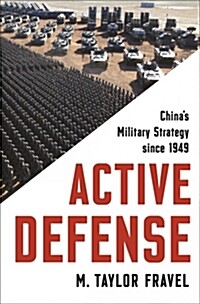
On escalation: metaphors and scenarios
- 발행사항
- London: New Brunswick, NJ; Transaction Publishers, 2010
- 형태사항
- xxvii, 308 p. : ill. ; 23 cm
- ISBN
- 9781412811620
- 청구기호
- 390.9 K12o
- 서지주기
- Includes bibliographical references index
소장정보
| 위치 | 등록번호 | 청구기호 / 출력 | 상태 | 반납예정일 |
|---|---|---|---|---|
이용 가능 (1) | ||||
| 1자료실 | 00017132 | 대출가능 | - | |
- 등록번호
- 00017132
- 상태/반납예정일
- 대출가능
- -
- 위치/청구기호(출력)
- 1자료실
책 소개
In this widely discussed and influential book, Herman Kahn probes the dynamics of escalation and demonstrates how the intensification of conflict can be depicted by means of a definite escalation ladder, ascent of which brings opponents closer to all-out war. At each rung of the ladder, before the climb proceeds, decisions must be made based on numerous choices. Some are clear and obvious, others obscure, but the options are always there.
Thermonuclear annihilation, says Kahn, is unlikely to come through accident; but nations may elect to climb the ladder to extinction. The basic material for the book was developed in briefings delivered by Kahn to military and civilian experts and revised in the light of his findings of a trip to Vietnam in the 1960s. In On Escalation he states the facts squarely. He asks the reader to face unemotionally the terrors of a world fully capable of suicide and to consider carefully the alternatives to such a path.
In the never-never land of nuclear warfare, where nuclear incredulity is pervasive and paralyzing to the imagination even for the professional analyst, salient details of possible scenarios for the outbreak of war, and even more for war fighting, are largely unexplored or even unnoticed. For scenarios in which war is terminated, the issues and possibilities of which are almost completely unstudied, the situation is even worse. Kahn's discussion throws light on the terrain and gives the individual a sense of the range of possibilities and complexities involved and are useful.
In this widely discussed and influential book, Herman Kahn probes the dynamics of escalation and demonstrates how the intensification of conflict can be depicted by means of a definite escalation ladder, ascent of which brings opponents closer to all-out war
목차
Introduction to the Transaction Edition, Thomas C. Schelling
Foreword to the Paperback Edition
Acknowledgments
Preface
I. INTRODUCTION
Escalation in Brief
The Strike and "Chicken" Metaphors
Sources of Control and Cooperation in International Society
The Question of Who, Whom, and Why Some Examples of the Importance of Who, Whom, and Why
An Example of Restraint and Negotiation in Total War (World War II)
A "Standard Crisis" Scenario
II. THE RUNGS OF THE ESCALATION LADDER
A Useful Metaphor
Description of the Rungs and Thresholds
Subcrisis Maneuvering
Traditional Crises (The Boat Is Rocked)
Intense Crises (The Unthinkable Nuclear War Becomes Credible)
Bizarre Crises (Nuclear Weapons Are Used)
Exemplary Central Attacks (Violating the Central Sanctuary-Nuclear Gunboat Diplomacy)
Military Central Wars (The New Kind of All-Out War)
Civilian Central Wars (Violation of the "No-City" Threshold)
III. DISAGREEMENTS AND SUBCRISIS MANEUVERING
Basic Description and Definition
The Rungs of Subcrisis Maneuvering
Rung 1. Ostensible Crisis
Rung 2. Political, Economic, and Diplomatic Gestures
Rung 3. Solemn and Formal Declarations
Rationality-of-Irrationality and Committal Strategies
The Rung 2 Escalation of the Summer of 1964
IV. TRADITIONAL CRISES
Basic Description and Definition
The Rungs of Traditional Crises
Rung 4. Hardening of Positions-Confrontation of Wills
Rung 5. Show of Force
Rung 6. Significant Mobilization
Rung 7. "Legal" Harassment-Retortions
Rung 8. Harassing Acts of Violence
Rung 9. Dramatic Military Confrontations
A Recent Example of a "Traditional Crisis" Scenario
V. INTENSE CRISES
Basic Description and Definition
The Rungs of Intense Crises
Rung 10. Provocative Breaking Off of Diplomatic Relations
Rung 11. Super-Ready Status
Rung 12. Large Conventional War (or Actions)
Rung 13. Large Compound Escalation
Rung 14. Declaration of Limited Conventional War
Rung 15. Barely Nuclear War
Rung 16. Nuclear "Ultimatums"
Rung 17. Limited Evacuation (Approximately 20 per cent)
Rung 18. Spectacular Show or Demonstration of Force
Rung 19. "Justifiable" Counterforce Attacks
Rung 20. "Peaceful" World-Wide Embargo or Blockade
VI. THE NUCLEAR THRESHOLD
The Saliency of the Nuclear Threshold
The Nuclear Threshold as a Prototype Restraint
The Nuclear Consensus-An Example of Systems Bargaining
The Considerations to Be Examined
Some Disadvantages to the U.S.
Pressures for Continued Escalation
The Immediate Consequences on the Wider Power Balance
Effects on Stability, the Arms Race, and Nuclear Proliferation
Some Additional Arguments in Favor of a Breach of the Nuclear Threshold
Recapitulation and Concluding Remarks on Preserving the Nuclear Threshold
Application of the "No Nuclear Use" Discussion to the Other Basic Thresholds
VII. BIZARRE CRISES AND EXEMPLARY CENTRAL ATTACKS
Basic Description and Definition
The Rungs of Bizarre Crises
Rung 21. Local Nuclear War-Exemplary
Rung 22. Declaration of Limited Nuclear War
Rung 23. Local Nuclear War-Military
Rung 24. Unusual, Provocative, and Significant Countermeasures
Rung 25. Evacuation (Approximately 70 per cent)
The "Central Sanctuary" Threshold
The Rungs of Exemplary Central Attacks
Rung 26. Demonstration Attack on Zone of Interior
Rung 27. Exemplary Attack on Military
Rung 28. Exemplary Attacks Against Property
Rung 29. Exemplary Attacks on Population
Rung 30. Complete Evacuation (Approximately 95 per cent)
Rung 31. Reciprocal Reprisals
Some Comments on the Relative Technical Simplicity of Exemplary Central Attacks
VIII. THE IMPORTANCE OF CRISES CONCEPTS
A Serious Gap in Much Military Planning and Discussion
Crisis and Damage Limitation
Seven Basic Options
A Proposal for ABM Deployment
A Proposal for Evacuation Preparations
Some Pros and Cons
Conclusion
IX. MILITARY AND CIVILIAN CENTRAL WARS
Basic Description and Definition
The Rungs of Military Central Wars
Rung 32. Formal Declaration of "General" War
Rung 33. Slow-Motion Counter-''Property" War
Rung 34. Slow-Motion Counterforce War
Rung 35. Constrained Force-Reduction Salvo
Rung 36. Constrained Disarming Attack
Rung 37. Counterforce-with-A voidance Attack
Rung 38. Unmodified Counterforce Attack
The Rungs of Civilian Central Wars
Rung 39. Slow-Motion Countercity War
Rung 40. Countervalue Salvo
Rung 41. Augmented Disarming Attack
Rung 42. Civilian Devastation Attack
Rung 43. Some Other Kinds of Controlled General War
Rung 44. Spasm or Insensate War
X. SOME COMMENTS ON "WAR-FIGHTING"
The Current Neglect of Strategy and Tactics
The Need for Limited Objectives If Deterrence Fails, and the Consequent Central Role of "Negotiation"
Bargaining in a Central War
The Problem of the "Fog of War"
XI. DEFECTS OF THE ESCALATION-LADDER METAPHOR
Discontinuities in and Importance of Distance Between Rungs
Criteria for Evaluating the Position of Rungs
Dynamics of Escalation
The Question of Style
Objections to the Upper Rungs
XII. DE-ESCALATION AND ITS AFTERMATH
De-escalation and Crisis Termination
Approaches to De-escalation
Escape from Current "Costs"
Insurance Against Further Escalation
Learning to Cooperate (Systems Bargaining?)
Setting Precedents (More Systems Bargaining?)
War-Fighting or Hostile Aspects
An Aspect of Crisis Management
A Special Kind of Conflict Management
Aftermaths of De-escalation from the Lower Rungs
Aftermaths of De-escalation from the Upper Rungs
XIII. OTHER ASPECTs OF ESCALATION AND CRISES
The Problems and Value of "Conservative" Behavior
Various Ways of Viewing Crises and Escalation
Strategy and Tactics
Crisis-Management Problems
Conflict Management, Crises, Escalation, and Arms Control
European Defense Policy-A Suggestion for a Proportionate Nuclear Reprisal Force
How Will Escalation Be Handled in the Twenty-First Century?
APPENDIX. RELEVANT CONCEPTS AND LANGUAGE FOR THE DISCUSSION OF ESCALATION
INDEX





